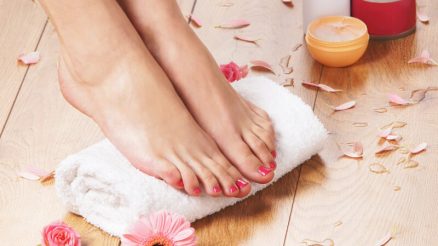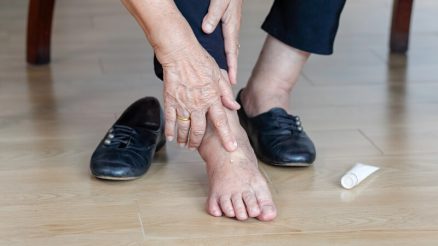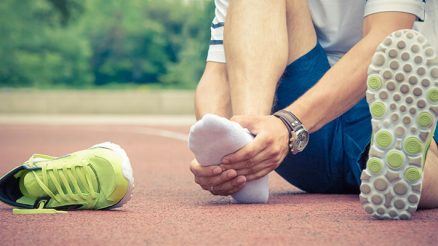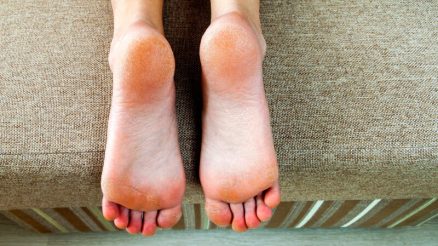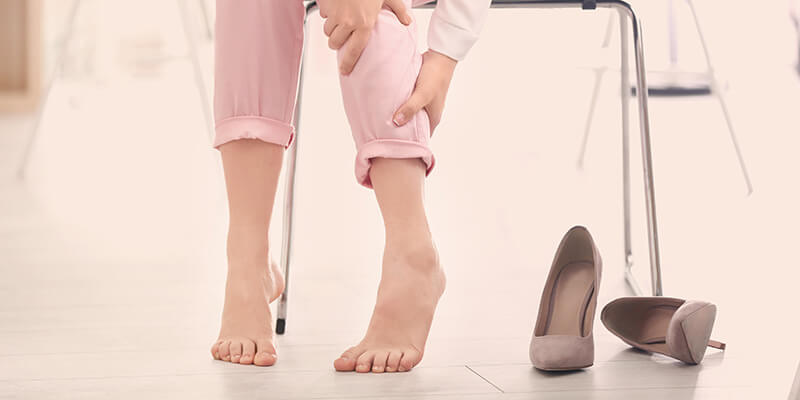
Effects | Health Problems | Prevention and Treatment | Exercises and Stretches | See a Doctor
More than half of employees worldwide spend 75% of their time at work standing. Whereas short-term effects of prolonged standing include ankle pain, knee pain, and sore feet, long-term effects are more severe. Standing for prolonged durations might lead to severe back pain and permanent muscle damages.
The effects of standing all day at work affect both employees and employers. Employees end up spending most of their time and resources treating conditions resulting from prolonged standing while their employers experience reduced productivity and quality of work.
However, well-designed workplaces feature employees working in shifts under different departments with seats provided for breaks. Such environments ensure that employees can take breaks while working, alternating between sitting and standing.
Table of Contents
- How Prolonged Standing Can Lead to Feet & Leg Problems?
- What are the Common Health Problems Caused by Standing for Long Periods of Time?
- How to Prevent and Relieve Foot Pain & Leg Pain?
- Wear Comfortable & Supportive Shoes
- Rotate Your Work Shoes
- Wear Compression Hose & Socks
- Alternate Between Sitting and Standing
- Change Your Working Position Frequently
- Maintain a Healthy Weight
- Massage Your Feet to Relieve Aches
- Good Arch Supports or Custom Orthotics
- Improved Posture for a Healthy Back
- Stand on an Anti-Fatigue Mat
- Epsom Salt Foot Soak and Ice Bath
- Elevate Your Feet
- Taking Breaks to Walk
- Stretches & Exercises for Your Feet and Legs
- Talk to a Podiatric Physician if Pain Persists
How Prolonged Standing Can Lead to Feet & Leg Problems?
Prolonged standing puts stress on the lower part of the body, hence straining bones, tendons, ligaments, and muscles in your body. It can also cause low blood supply to the lower part of the body, leading to soreness. Blood accumulation in your leg may also result from prolonged standing, increasing your risk of developing edema, varicose veins, and flat feet.
What are the Common Health Problems Caused by Standing for Long Periods of Time?
• Slouching
Slouching can result from prolonged standing at the workplace. It is when your spine becomes rigid, leading to poor posture.
• Varicose Veins
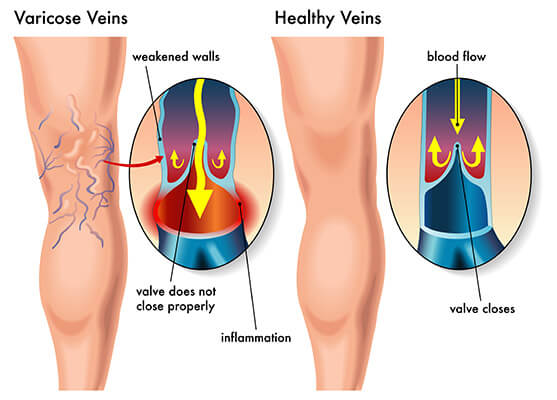
Prolonged standing increases your risk of developing varicose veins. According to various studies, every five people in the workplace with varicose veins are as a result of prolonged standing. When standing, vein valves in your legs assist in pumping blood upwards to the heart, aided by muscle movement to prevent reversal blood flow.
In fact, such valves might fail completely if you tend to stand for prolonged durations at work. Moreover, the force of gravity causes blood to accumulate in your feet, leading to a condition known as varicose veins.
• Cardiovascular Diseases
A research was conducted to examine the relationship between standing and carotid atherosclerosis; it was found that prolonged standing can lead to the cardiovascular condition. In turn, atherosclerosis can lead to coronary artery, carotid artery or peripheral artery disease.
Standing doesn’t involve significant movement, hence exerts pressure on the joint hip, knees, and ankles. This leads to a reduction in synovial joint lubrication, leading to tearing. The resulting pain can be excessive, causing difficulty in walking or movement.
• Muscle Fatigue
Standing for long periods of time can also lead to muscle fatigue. According to the Occupational Safety and Health Administration Organization, muscle fatigue accounts for about 33% of workers’ injury and illness. Workers experience fatigue after standing for more than five hours and thus need more than thirty minutes to relax.
How to Prevent and Relieve Foot Pain & Leg Pain?
There are several ways to prevent and relieve foot and leg pain as follows:
Wear Comfortable & Supportive Shoes
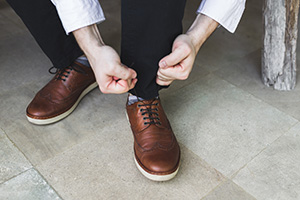
Use slippers with arch support that you can walk in the whole day. Choose shoes that are comfortable and have enough room for your feet; you don’t want to end up with squeezed feet after a hard day’s work. Avoid high-heeled shoes of up to six inches.
High-heeled shoes exert all your weight on the front part of your feet, causing pain. If you must wear them, go for heels that are a bit wide and as low as three inches, especially when you tend to stand for long periods of time at the workplace.
Walking barefoot exposes you to infections such athlete’s foot. Use flip flops in bathrooms, sandy areas or even locker room showers. Flip flops can reduce pain resulting from stressed fractures, especially if you have flat feet. However, avoid using them regularly to help reduce your flat foot problem.
Rotate Your Work Shoes
Wearing the same shoes everyday can heighten discomfort you feel at the workplace, standing for prolonged durations. Make sure you have at least two pairs of work shoes that you can alternate wearing on different days. Rotating your work shoes can change pressure points on your feet that result from prolonged standing.
As a result, you won’t just relieve over-pressured muscles, but also activate various muscle groups to reduce the overall effects of standing for long hours.
Wear Compression Hose & Socks
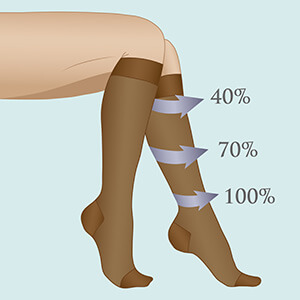
Compression hoses are designed to increase blood flow in your feet; it works by squeezing them. They help prevent formation of blood clots in your limbs that may arise from prolonged standing. With technological improvements, there are various socks types you can wear to prevent adverse effects of prolonged standing.
Socks designed to use moisture-absorbent technology can absorb moisture from your feet to reduce the kind of discomfort that’s caused by wet feet. Copper or anti-bacterial socks can assist in minimizing foot odor caused by bacterial infections.
Anti-friction socks are perfect if you want to protect your feet from developing hot spots and blisters due to prolonged standing. On the other hand, socks with padding beneath heels are designed to help reduce pressure on your heels. Opt for socks with extra stretch material if you’re in need of arch support for your feet.
Alternate Between Sitting and Standing
Waitresses, bank tellers, chefs, factory workers etc. often get their jobs done while standing, hence they should alternate between standing and sitting to ensure there’s proper blood circulation throughout their bodies. You can sit while receiving a phone call or doing some paperwork.
Take every chance you get to sit down and even raise your legs a bit if that’s possible to enhance blood circulation. Remove your shoes to let your feet relax and cool down due to evaporation and as fresh air hits them.
Take advantage of lunch breaks and even break times to relax after prolonged standing. If your workplace has no seats, go for lunch in a nearby mall or food court just to make sure you get a chance to break from standing and sit for awhile.
Aged people are more susceptible to leg injuries and conditions such as varicose veins because their tendons and ligament have lost elasticity. Take any chance you get to alternate between standing and sitting to relieve your feet and legs of pain.
Change Your Working Position Frequently
Change your sitting or standing position regularly to increase blood circulation and reduce foot tension. Concrete or ceramic walls found in most workplaces today can easily transfer cold to your feet, leading to reduced blood circulation. Changing your working position frequently helps keep your metabolic rate high for faster blood flow.
It also breaks the monotony of standing on your feet at a single point for prolonged duration. Given any opportunity or during breaks, take short walks outdoors on grass to ease tension on your feet while waiting for your next task.
Maintain a Healthy Weight
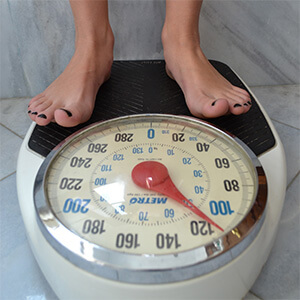
Overweight or obese people are generally at a high risk of developing feet and leg problems due to prolonged standing. This is attributed to the fact that their body weights exert pressure on their feet, leading to pain and issues related to standing for prolonged periods of time.
Maintain a healthy weight or work on reducing your BMI if you are overweight. Engage in more cardiovascular exercises such as walking, running or jogging to help you lose weight. Alternatively, you can reduce weight by eating a healthy diet free from complex carbohydrates and unhealthy fats.
After all, you only need up to two thousand calories a day of energy to work or exercise. Reduce your daily calorie intake by 500 calories to ensure you lose up to four pounds in a month.
Massage Your Feet to Relieve Aches
Hire a professional to massage your feet and relieve you of aches, or do it on your own. Massage can help improve your blood circulation. Begin massaging your feet by rubbing them from toes to your calf.
Use a wooden roller to massage them gently without straining your hands. Peppermint lotion can invigorate your feet for increased relaxation of tensed muscles.
Good Arch Supports or Custom Orthotics
Orthotics are custom-made insoles of shoes with good cushioning and shock absorbers to reduce leg conditions arising from prolonged standing. They are designed to prevent flat foot and related pain resulting from sores at the bottom of your feet.
Plantar fasciitis is a condition typical of the bottom of your feet becoming painful due to prolonged standing. Research has proven that over two thousand people suffer from plantar fasciitis in the US every year. Buy a bigger pair of shoes to accommodate your orthotics for increased arch support.
In addition to buying pre-made orthotics, you can order custom designs to be made just for you. Although they might be more costly, custom orthotics are worth each penny because they’re made for you and your specific foot problem, hence offer good arch support.
Improved Posture for a Healthy Back
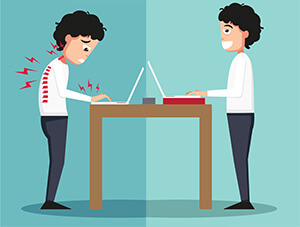
Good posture is the position at which you hold your body against gravity. With good posture, there is less strain on supporting muscles and ligaments, which in turn reduce pressure on your foot while standing. The right body posture reduces your chance of developing back pain and leg problems associated with prolonged standing.
Before lifting any heavy object, make sure your feet are firm on the ground. Bend your knees and lift the object without leaning forward. Sit straight upwards without bending your shoulders. Your office desk and chair should be at the right level and proportion to each other to help you maintain a good working posture.
Stand on an Anti-Fatigue Mat
Anti-fatigue mats can be made of rubber, vinyl, leather, wood or foam. They are designed to decrease stress exerted on your feet and legs by providing a cushioning on the floor. Most employers today provide anti-fatigue mats in the workplace at places where employees stand for long periods while working.
If not provided by your employer, carry one from home to increase your comfort at the workplace. However, thick anti-fatigue mats can be dangerous; if you’re not careful while using such mats, you might trip and fall down easily. Be observant or choose a mat that suits you and your unique needs.
Epsom Salt Foot Soak and Ice Bath
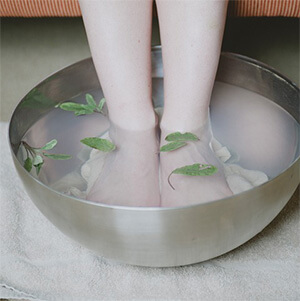
Soak your feet and legs in warm Epsom salt bath to reduce foot and leg pain. The magnesium in the salt causes muscles to relax. If your feet are still sore, follow Epsom bath with an ice bath for fifteen minutes until your feet become numb. Dry your feet properly to avoid foot rot or athlete’s foot.
Elevate Your Feet
While taking breaks, raise your feet to increase blood flow from your feet to other parts of your body after prolonged standing.
Taking Breaks to Walk
Take short breaks every two hours to walk for increased blood flow and reduced stress on your joints.
Stretches & Exercises for Your Feet and Legs
The following exercises can be of great help after standing for long hours at work:
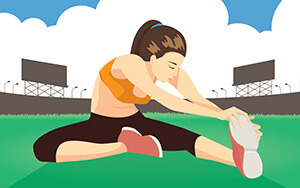
1. Hamstring Stretch
You can perform hamstring stretches in two ways. Lie on a smooth yet hard surface and bend your right knee towards your chest while the left leg remains straight on the ground. Alternatively, reach for your toes with your fingers while keeping your legs straight. Do you feel a stretch along the hamstrings?
2. Figure-8 Hip Rotations
Circle your hip as if you are creating the number eight. Shift the balance from one side of your hip to another. This exercise can help promote blood circulation in your lower extremities.
3. Straight Leg Calf Stretch
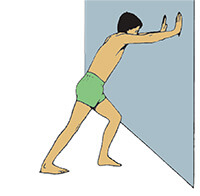
The calf stretch is another good exercise that will strengthen the muscles that support your foot. To do this exercise, place both hands against a wall at chest height, place the injured foot about a step behind the other foot, making sure that both feet are flat against the floor. Then simply leans towards the wall, hold for 15 to 30 seconds, then release and repeat.
4. Tennis Ball Roll
Tennis ball roll stimulates blood flow and eases tight muscles. Place a tennis ball under your foot on a hard surface. Try to balance on it slowly, rolling from front to back, and side to side. Tennis ball roll can be focused on different body parts such as calves, hips, shoulders, hamstrings, quads, and gluts.
5. Towel Stretch
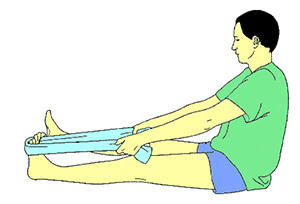
The towel stretch is similar to flexing your feet when you first get up, but will provide even greater stretching. You start this exercise by sitting on the floor with your legs stretched out in front of you. Then you simply grab a towel at both ends, place under the ball of your foot, then gently pull the towel towards your body. Hold this position for about 15 to 30 seconds, then release and repeat.
6. Heel Raises
Heel raises are meant to improve blood circulation around the feet area to other parts of the body. The exercises can be performed while standing, sitting or lying down to help improve blood flow and relax tensed muscles. Run, walk, jump or stand to stretch your heels.
7. Hacky-Sack Kicks
Start the exercise by standing tall and kick your right foot to hit your left hand. Do the same thing with your left foot to hit your right hand. The repetitive nature of the kicks can help relax your tensed calf and feet muscles. Engage in the exercise at least thrice a week to help relax your gluteus muscles and muscles around your lower limbs.
8. Ankle Pumps and Rotation Stretch
A simple ankle pump can relieve stress around your ankles to prevent blood clots. Sit on a chair with your back straight, and stretch your legs apart then point your toes up for a count to 10. Next, point your toes down for a count to 10. Repeat the exercise for about thirty minutes to stretch muscles around your ankles.
Talk to a Podiatric Physician if Pain Persists
Prolonged sitting has been a major concern in the workplace for many years; however, it has been overshadowed by prolonged standing. It is important to know and understand the effects of prolonged standing and how to manage or prevent likely resultant conditions.
As explained above, there are numerous remedies to prolonged standing. If pain persists, talk to a podiatric physician to diagnose and treat severe conditions that might affect your lower extremities, including ankles. Seek medical attention if none of the strategies discussed above seem to help.
Sources:
CCOHS, Working in a Standing Position – Basic Information
wikiHow, How to Avoid Feet and Leg Problems if Standing for Work





